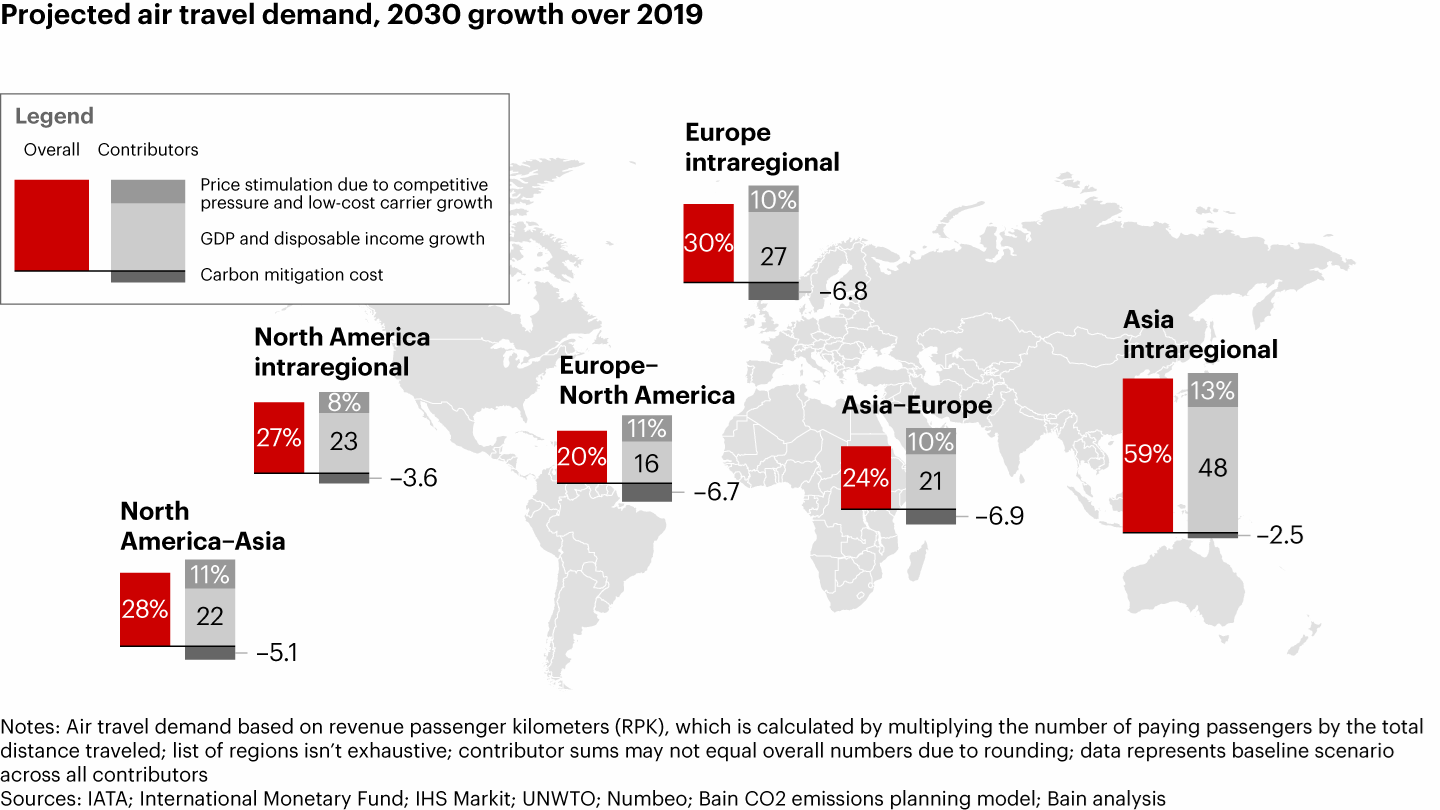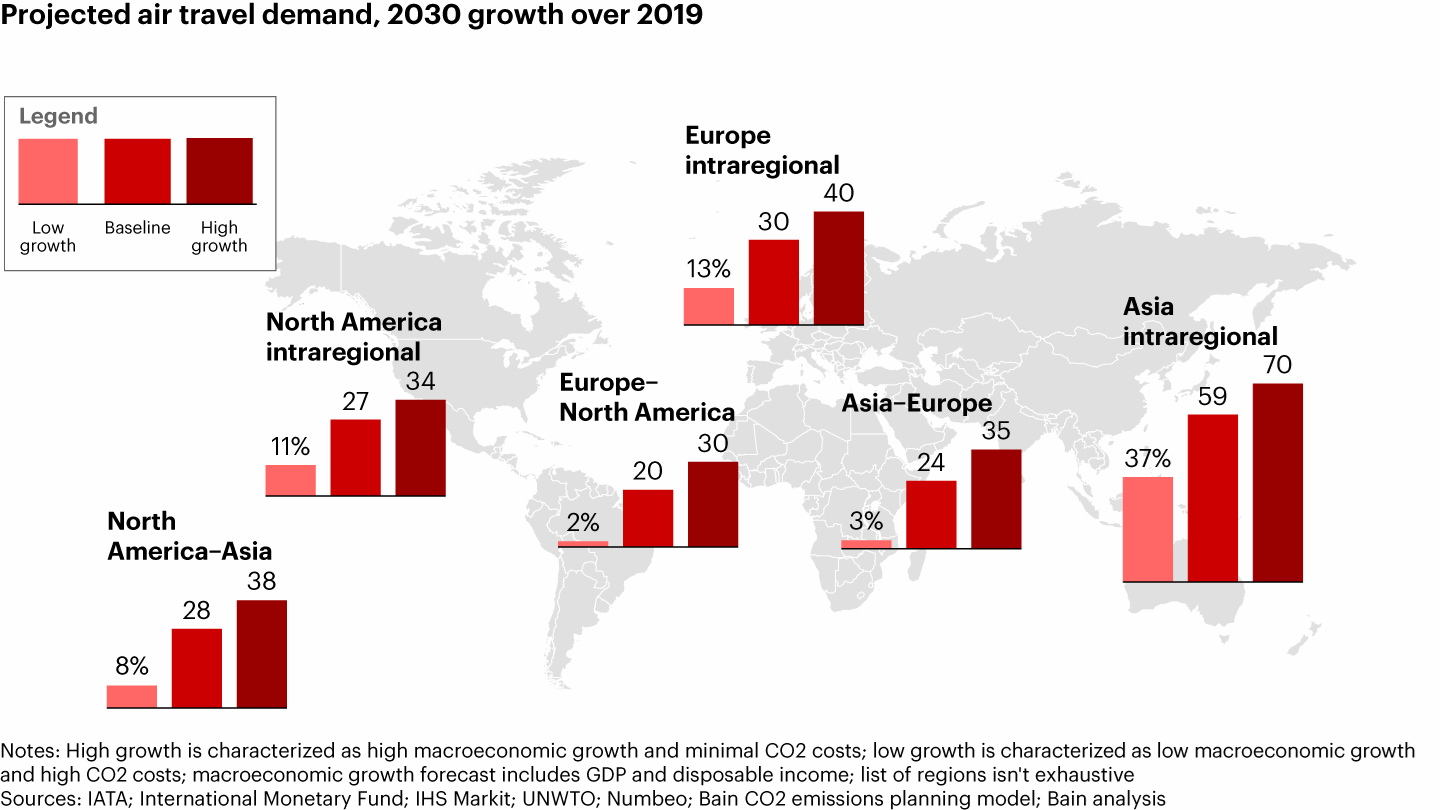인터랙티브
Demand should surpass prepandemic levels this year
Asia will lead expansion as three growth factors hit regions differently


European long-haul flights are the most vulnerable to economic swings



Custom Air Travel Forecasts
Improve your financial, capacity, and commercial planning with granular air traffic demand projections.
Launched in May 2020, our air traffic forecast was originally designed as a response to pandemic uncertainties. It has since evolved to cover other key factors: macroeconomic growth, levels of disposable income, and carbon mitigation costs. Now extended to the end of the decade, the forecast is updated regularly using the latest information.
Here is the outlook as of the end of the first quarter of 2024:
- Annual air travel demand remains on track to surpass the 2019 total this year, as measured by revenue passenger kilometers—the number of paying passengers multiplied by the total distance traveled (see Figure 1 above). Meanwhile, the 2030 outlook remains relatively unchanged vs. the previous quarter. However, several factors have contributed to significant changes in the forecasts for specific regions and countries (see Figures 2 and 3).
- Weaker-than-expected performance during the previous quarter and a dip in the macroeconomic forecast have lowered the 2030 demand outlook for North American intraregional travel by more than 2 percentage points. This is equivalent to a $3 billion revenue decrease at 2023 yields.
- Europe’s intraregional demand outlook rose more than 5 percentage points, the equivalent of $5 billion in revenue. However, on a relative basis, our model anticipates lower growth rates in outbound regional travel for several of Europe’s biggest points of sale (the UK, Germany, and Italy) compared to others, such as Spain, Turkey, and Poland.
- The effects of decarbonization initiatives are also notable. Nordic countries’ intra-European travel growth between 2019 and 2030 is forecast to slow considerably because of rising travel costs linked to those countries’ sustainable aviation fuel commitments. Sweden may even see a decline in total annual passenger volumes.
- We continue to anticipate significant intraregional demand growth in Asia—a 59% increase from 2019 to 2030.
- Low-cost airlines, which fared somewhat better through the Covid-19 pandemic than larger carriers, continue to grow market share. We forecast that low-cost carriers will reach a 48% share of short-haul flights by 2030 in the baseline scenario, up from a 36% share in 2015 and 40% in 2019. Much of the expansion will happen in Europe and Asia (particularly within China and India).
Projected market and financial information, analyses, and conclusions are based (unless sourced otherwise) on external information and Bain & Company’s judgment. They are intended as a guide only and should not be construed as definitive forecasts or guarantees of future performance or results. No responsibility or liability whatsoever is accepted by any person, including Bain & Company, Inc., or its affiliates and their respective officers, employees, or agents, for any errors or omissions.

Bain's Quarterly Airlines Newsletter
Subscribe to receive our airlines insights in your inbox every quarter.